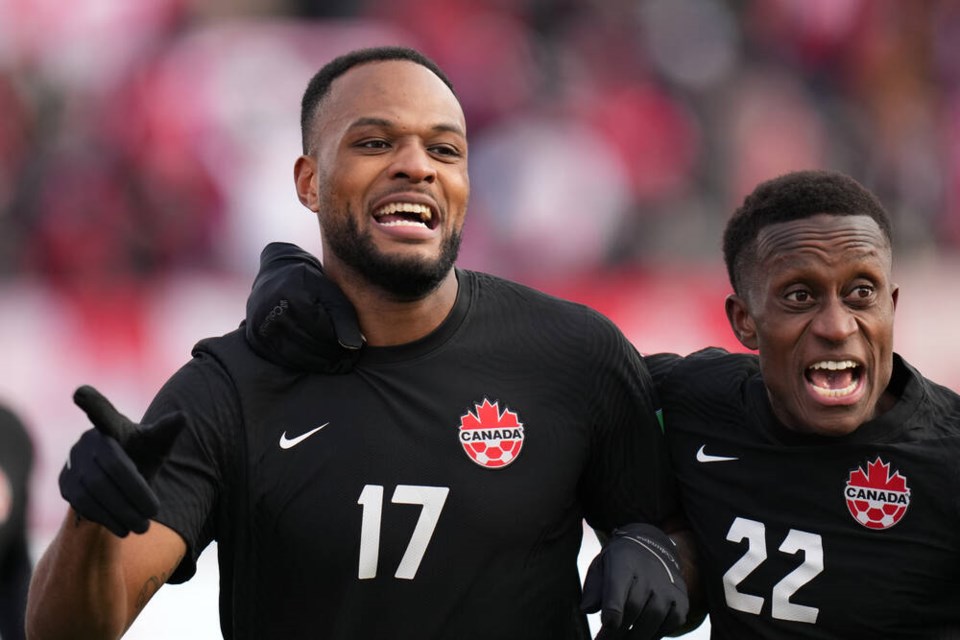The questions from Island media and soccer officials were all about hosting the World Cup in 2026. Eyes rolled and a few disbelieving guffaws could be heard in the crowded meeting room of Starlight Stadium in February 2020 when Canada head coach John Herdman, here to announce an upcoming game in Langford against Trinidad and Tobago, said the goal was not the automatic berth in 2026 but the one nobody thought Canada would get for Qatar World Cup 2022.
Everybody appreciated Herdman’s energetic optimism, but none of the so-called experts in the media or soccer community thought that was even remotely possible for a nation that had not been to the World Cup since Island players Ian Bridge, George Pakos and Jamie Lowery qualified and played in the 1986 tournament.
Canada was ranked No. 73 in the FIFA world rankings at the time and No. 7 in CONCACAF, both well outside the envelope of qualifying for 2022.
Canada was outside even being in the CONCACAF top six and looking to catch FIFA No. 69 and CONCACAF No. 6 El Salvador by June of that year to make the final round of regional qualifying, also known as the Hexagonal. That made the scheduled game against Trinidad and Tobago at Starlight Stadium in March 2020 even more crucial. The game was never played due to a five-letter acronym, COVID, that few outside virology had ever heard of at the time.
The CONCACAF qualifying tournament was eventually held and by now everybody knows the story. The minnow became the shark with a sharply rising and dashing young squad that played a dynamic and skilled style that engulfed CONCACAF, going from seventh in 2020 to top of the table to earn a seat at the table Wednesday to open its 2022 World Cup account in Qatar against world No. 2 Belgium. Just like that, names like Davies, David, Buchanan and Larin had finally replaced Bridge, Pakos, Lowery, Wilson and Lenarduzzi.
That day in Langford, Herdman explained it was going to be an arduous 20-plus games qualifying journey, and Canada was already behind in the race. But he was adamant it was do-able because of the young players he had coming up in the national team program. Most others thought it was a crazy dream for 2022, regardless. Too soon. Be content to build for 2026.
But Herdman had other ideas. They have come to be.
“We keep writing new chapters in this story and creating a new [storyline] of Canada as a footballing nation,” Herdman has said.
“It took us a while to get there, but Canada is coming.”
And nobody is doubting now.



